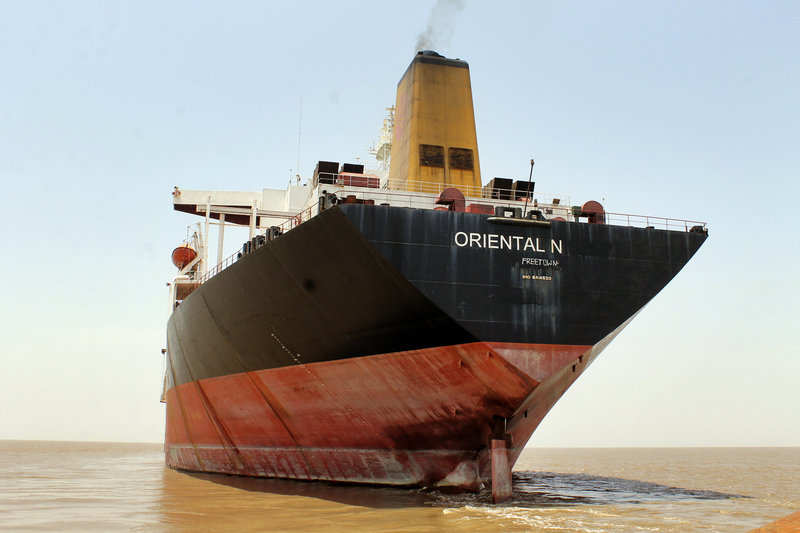NEW DELHI – A ruling by India’s Supreme Court has cleared the way for the former Exxon Valdez tanker to be dismantled, the final chapter of its notorious career.
The ship that dumped 11 million gallons of crude oil into Alaska’s Prince William Sound in 1989 should land on the beaches of Alang in western Gujarat state later this month, its owners said. The vessel, now named the Oriental Nicety, will be hacked apart by hundreds of low-paid laborers in the world’s largest ship graveyard.
Local environmentalists asked the high court in April to block the vessel’s entry, arguing that it was laden with toxic chemicals, including mercury, arsenic and asbestos. The court ruled against them this week.
Though the court allowed the ship to die in India, it ruled that future inbound “end-of-life” vessels heading for Alang would have to prove they are in compliance with the U.N. Basel Convention governing the international movement of hazardous waste, a step activists termed a victory of sorts.
The ship’s owner, Priya Blue Industries, which specializes in breaking up ships, welcomed the news but said the legal delay has cost the firm $10 million. Not only has the market value of steel and other scrap materials obtained from old ships declined, it said, but the company also had to pay the vessel’s 22-man crew as the Oriental Nicety sat anchored outside India’s 12-mile territorial limit awaiting the court’s decision.
“I don’t know what they’ve been doing all day,” said Sanjay P. Mehta, a partner in the company. “But I’m sure they’ve been frustrated.”
Alang is a global magnet for dying ships in part because its 38-foot tidal variation allows them to sail directly onto its six-mile beach, avoiding the need for expensive dry docks. Once beached, the ships are hacked apart by laborers working in near-Victorian conditions for a few dollars a day, many handling oxy-acetate torches without shoes or protective helmets.
Since it opened in 1983, Alang has reduced some 6,000 ships to bits of metal, glass, plastic and rubber, a process sometimes called “razor-blading,” from the days when shavers made use of the recycled metal. At any given time, up to 100 ships are in various stages of deconstruction or at anchor awaiting their turn.
Taking apart the former Exxon Valdez will take about 500 workers around four months, its owners said.
“The court’s decision is a good one and will boost the morale of the industry,” Mehta said. “But we’re not celebrating. These bogus environmental groups have caused us extensive losses.”
Gopal Krishna, an activist with the ToxicsWatch Alliance environmental group, which filed the legal challenge, disagreed. “We’re only demanding compliance with environmental laws and the Basel Convention,” he said. “What’s bogus about that?”
After leaving Alaska, the Exxon Valdez was sold several times, weathered six name changes, was converted in 2008 to carry iron ore and suffered another serious accident in 2010 when it collided with a cargo ship off China.
For some people living in Alaska, where memories of the 1989 spill are still fresh, it ends a sad, painful chapter.
“Good riddance,” said Stan Jones, a former reporter with the Anchorage Daily News who covered the accident and now works with a citizens council helping to prevent similar disasters. “It was a really bad time, so people in Alaska are happy they’re breaking it up in Asia.”
Send questions/comments to the editors.



Success. Please wait for the page to reload. If the page does not reload within 5 seconds, please refresh the page.
Enter your email and password to access comments.
Hi, to comment on stories you must . This profile is in addition to your subscription and website login.
Already have a commenting profile? .
Invalid username/password.
Please check your email to confirm and complete your registration.
Only subscribers are eligible to post comments. Please subscribe or login first for digital access. Here’s why.
Use the form below to reset your password. When you've submitted your account email, we will send an email with a reset code.